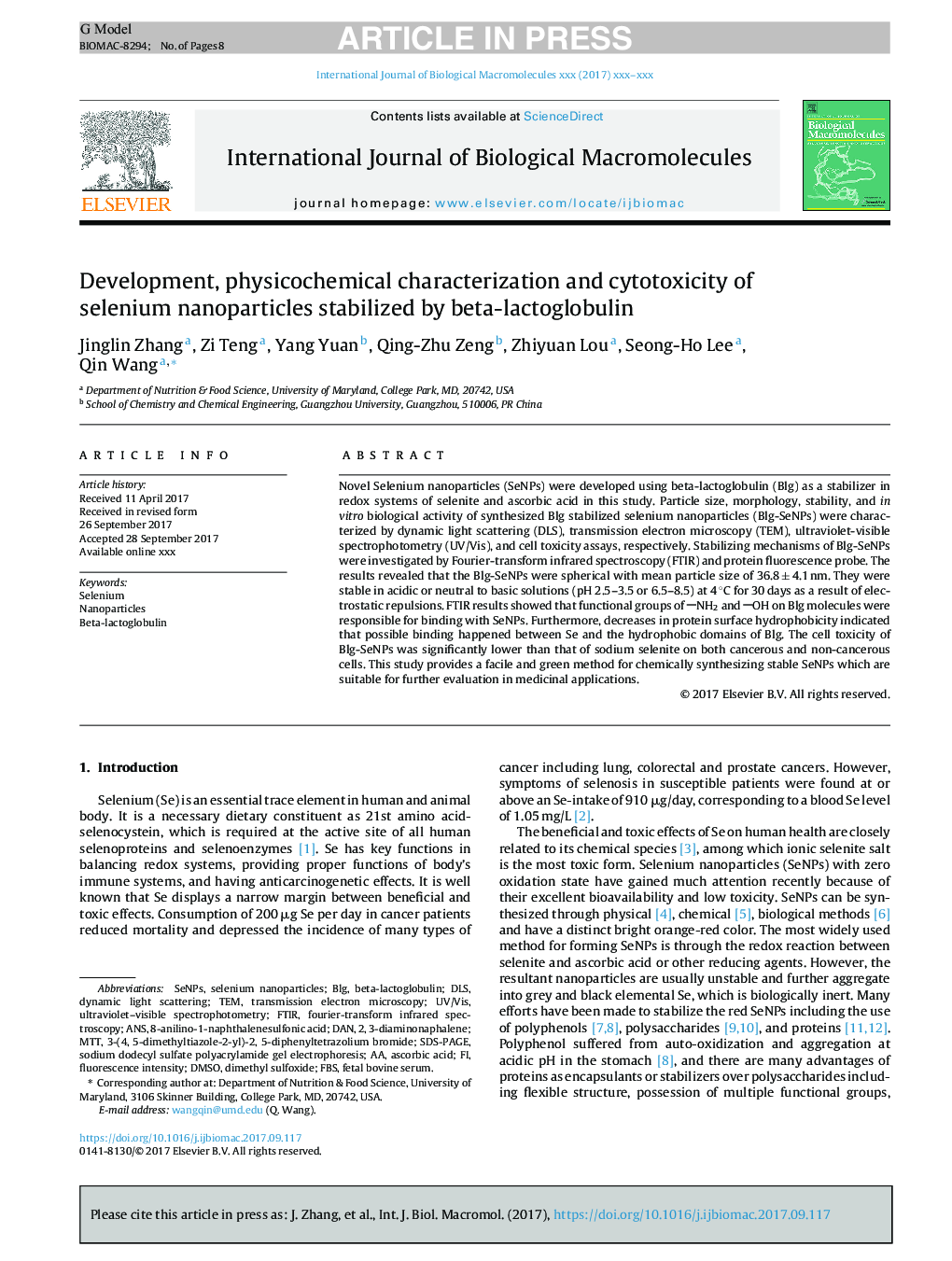| Article ID | Journal | Published Year | Pages | File Type |
|---|---|---|---|---|
| 8328601 | International Journal of Biological Macromolecules | 2018 | 8 Pages |
Abstract
Novel Selenium nanoparticles (SeNPs) were developed using beta-lactoglobulin (Blg) as a stabilizer in redox systems of selenite and ascorbic acid in this study. Particle size, morphology, stability, and in vitro biological activity of synthesized Blg stabilized selenium nanoparticles (Blg-SeNPs) were characterized by dynamic light scattering (DLS), transmission electron microscopy (TEM), ultraviolet-visible spectrophotometry (UV/Vis), and cell toxicity assays, respectively. Stabilizing mechanisms of Blg-SeNPs were investigated by Fourier-transform infrared spectroscopy (FTIR) and protein fluorescence probe. The results revealed that the Blg-SeNPs were spherical with mean particle size of 36.8 ± 4.1 nm. They were stable in acidic or neutral to basic solutions (pH 2.5-3.5 or 6.5-8.5) at 4 °C for 30 days as a result of electrostatic repulsions. FTIR results showed that functional groups of NH2 and OH on Blg molecules were responsible for binding with SeNPs. Furthermore, decreases in protein surface hydrophobicity indicated that possible binding happened between Se and the hydrophobic domains of Blg. The cell toxicity of Blg-SeNPs was significantly lower than that of sodium selenite on both cancerous and non-cancerous cells. This study provides a facile and green method for chemically synthesizing stable SeNPs which are suitable for further evaluation in medicinal applications.
Keywords
DLS8-anilino-1-naphthalenesulfonic acidSENPsBLGFBSDMSOMTTUV/VisAscorbic acidUltraviolet–Visible SpectrophotometrySDS-PAGESodium dodecyl sulfate polyacrylamide gel electrophoresisTemBeta-lactoglobulinFourier-transform infrared spectroscopyDimethyl sulfoxideANSfetal bovine serumSeleniumFluorescence intensityFTIRTransmission electron microscopyNanoparticlesSelenium nanoparticlesDANDynamic Light Scattering
Related Topics
Life Sciences
Biochemistry, Genetics and Molecular Biology
Biochemistry
Authors
Jinglin Zhang, Zi Teng, Yang Yuan, Qing-Zhu Zeng, Zhiyuan Lou, Seong-Ho Lee, Qin Wang,
